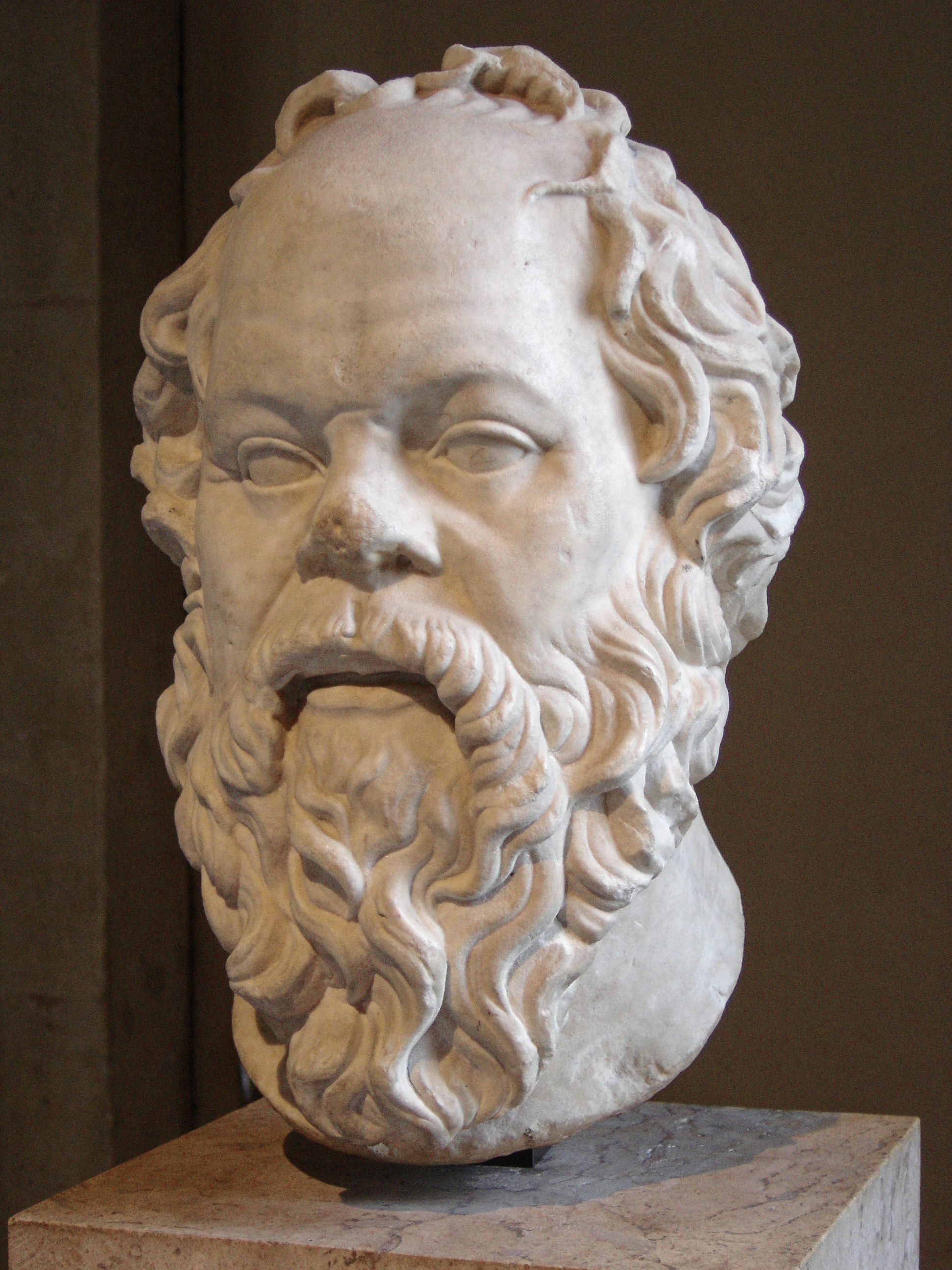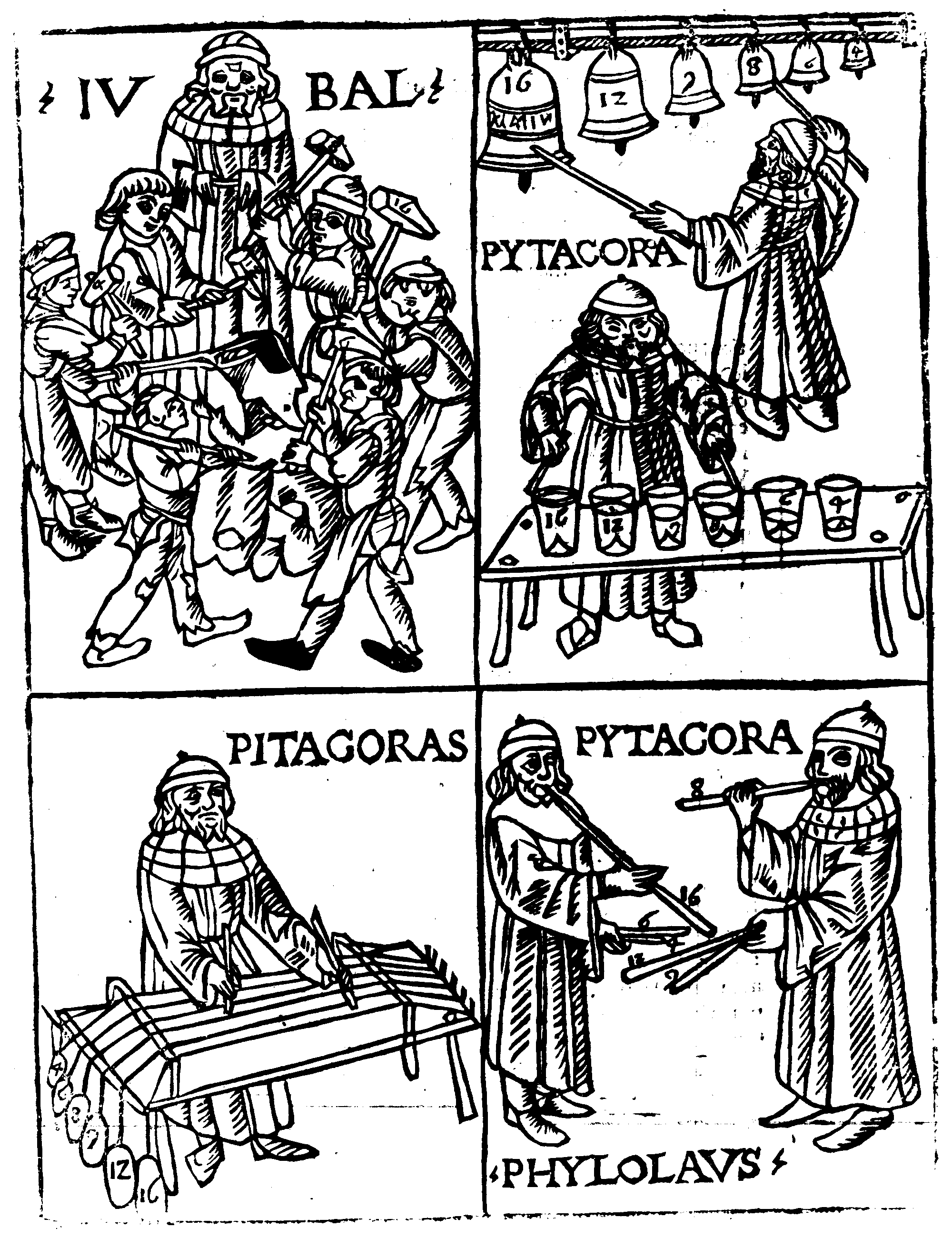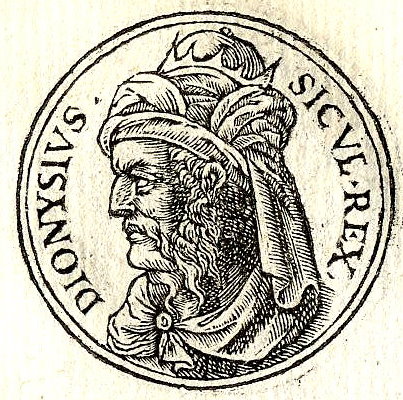|
Archytas
Archytas (; ; 435/410–360/350 BC) was an Ancient Greek mathematician, music theorist, statesman, and strategist from the ancient city of Taras (Tarentum) in Southern Italy. He was a scientist and philosopher affiliated with the Pythagorean school and famous for being the reputed founder of mathematical mechanics and a friend of Plato. As a Pythagorean, Archytas believed that arithmetic (logistic), rather than geometry, provided the basis for satisfactory proofs, and developed the most famous argument for the infinity of the universe in antiquity. Life Archytas was born in Tarentum, a Greek city in the Italian Peninsula that was part of Magna Graecia, and was the son of Hestiaeus. He was presumably taught by Philolaus, and taught mathematics to Eudoxus of Cnidus and to Eudoxus' student, Menaechmus. Politically and militarily, Archytas appears to have been the dominant figure in Tarentum in his generation, somewhat comparable to Pericles in Athens a half-century earlier. ... [...More Info...] [...Related Items...] OR: [Wikipedia] [Google] [Baidu] |
Pythagoreanism
Pythagoreanism originated in the 6th century BC, based on and around the teachings and beliefs held by Pythagoras and his followers, the Pythagoreans. Pythagoras established the first Pythagorean community in the Ancient Greece, ancient Greek colony of Crotone, Kroton, in modern Calabria (Italy) circa 530 BC. Early Pythagorean communities spread throughout Magna Graecia. Already during Pythagoras' life it is likely that the distinction between the ''akousmatikoi'' ("those who listen"), who is conventionally regarded as more concerned with religious, and ritual elements, and associated with the oral tradition, and the ''mathematikoi'' ("those who learn") existed. The ancient biographers of Pythagoras, Iamblichus () and his master Porphyry (philosopher), Porphyry ( ) seem to make the distinction of the two as that of 'beginner' and 'advanced'. As the Pythagorean cenobites practiced an esoteric path, like the Greco-Roman mysteries, mystery schools of antiquity, the adherents, ''akou ... [...More Info...] [...Related Items...] OR: [Wikipedia] [Google] [Baidu] |
Greek Mathematics
Ancient Greek mathematics refers to the history of mathematical ideas and texts in Ancient Greece during Classical antiquity, classical and late antiquity, mostly from the 5th century BC to the 6th century AD. Greek mathematicians lived in cities spread around the shores of the ancient Mediterranean, from Anatolia to Italy and North Africa, but were united by Greek culture and the Ancient Greek, Greek language. The development of mathematics as a theoretical discipline and the use of deductive reasoning in Mathematical proof, proofs is an important difference between Greek mathematics and those of preceding civilizations. The early history of Greek mathematics is obscure, and traditional narratives of Theorem, mathematical theorems found before the fifth century BC are regarded as later inventions. It is now generally accepted that treatises of deductive mathematics written in Greek began circulating around the mid-fifth century BC, but the earliest complete work on the subje ... [...More Info...] [...Related Items...] OR: [Wikipedia] [Google] [Baidu] |
Doubling The Cube
Doubling the cube, also known as the Delian problem, is an ancient geometry, geometric problem. Given the Edge (geometry), edge of a cube, the problem requires the construction of the edge of a second cube whose volume is double that of the first. As with the related problems of squaring the circle and trisecting the angle, doubling the cube is now known to be impossible to construct by using only a compass and straightedge, but even in ancient times solutions were known that employed other methods. According to Eutocius, Archytas was the first to solve the problem of doubling the cube (the so-called Delian problem) with an ingenious geometric construction. The nonexistence of a compass-and-straightedge solution was finally proven by Pierre Wantzel in 1837. In algebraic terms, doubling a unit cube requires the construction of a line segment of length , where ; in other words, , the cube root of two. This is because a cube of side length 1 has a volume of , and a cube of twice tha ... [...More Info...] [...Related Items...] OR: [Wikipedia] [Google] [Baidu] |
Pythagoras
Pythagoras of Samos (; BC) was an ancient Ionian Greek philosopher, polymath, and the eponymous founder of Pythagoreanism. His political and religious teachings were well known in Magna Graecia and influenced the philosophies of Plato, Aristotle, and, through them, Western philosophy. Modern scholars disagree regarding Pythagoras's education and influences, but most agree that he travelled to Croton in southern Italy around 530 BC, where he founded a school in which initiates were allegedly sworn to secrecy and lived a communal, ascetic lifestyle. In antiquity, Pythagoras was credited with mathematical and scientific discoveries, such as the Pythagorean theorem, Pythagorean tuning, the five regular solids, the theory of proportions, the sphericity of the Earth, the identity of the morning and evening stars as the planet Venus, and the division of the globe into five climatic zones. He was reputedly the first man to call himself a philosopher ("lover of wi ... [...More Info...] [...Related Items...] OR: [Wikipedia] [Google] [Baidu] |
Magna Graecia
Magna Graecia refers to the Greek-speaking areas of southern Italy, encompassing the modern Regions of Italy, Italian regions of Calabria, Apulia, Basilicata, Campania, and Sicily. These regions were Greek colonisation, extensively settled by Greeks beginning in the 8th century BC. Initially founded by their ''metropoleis'' (mother cities), the settlements evolved into independent and powerful Greek city-states (''poleis''). The settlers brought with them Ancient Greece, Hellenic civilization, which over time developed distinct local forms due to both their distance from Greece and the influence of the indigenous peoples of southern Italy. This interaction left a lasting imprint on Italy, including on Ancient Rome, Roman culture. The Greek settlers also influenced native groups such as the Sicels and the Oenotrians, many of whom adopted Greek culture and became Hellenization, Hellenized. In areas like architecture and urban planning, the colonies sometimes surpassed the achievem ... [...More Info...] [...Related Items...] OR: [Wikipedia] [Google] [Baidu] |
Plato
Plato ( ; Greek language, Greek: , ; born BC, died 348/347 BC) was an ancient Greek philosopher of the Classical Greece, Classical period who is considered a foundational thinker in Western philosophy and an innovator of the written dialogue and dialectic forms. He influenced all the major areas of theoretical philosophy and practical philosophy, and was the founder of the Platonic Academy, a philosophical school in History of Athens, Athens where Plato taught the doctrines that would later become known as Platonism. Plato's most famous contribution is the theory of forms, theory of forms (or ideas), which aims to solve what is now known as the problem of universals. He was influenced by the pre-Socratic thinkers Pythagoras, Heraclitus, and Parmenides, although much of what is known about them is derived from Plato himself. Along with his teacher Socrates, and his student Aristotle, Plato is a central figure in the history of Western philosophy. Plato's complete ... [...More Info...] [...Related Items...] OR: [Wikipedia] [Google] [Baidu] |
Philosopher King
The philosopher king is a hypothetical ruler in whom political skill is combined with philosophical knowledge. The concept of a city-state ruled by philosophers is first explored in Plato's ''Republic'', written around 375 BC. Plato argued that the ideal state – one which ensured the maximum possible happiness for all its citizens – could only be brought into being by a ruler possessed of absolute knowledge, obtained through philosophical study. From the Middle Ages onwards, Islamic and Jewish authors expanded on the theory, adapting it to suit their own conceptions of the perfect ruler. Several historical figures, including Marcus Aurelius and Ashoka the Great, have been described by ancient and modern writers as embodying the philosopher king ideal. In the ''Republic'' The ''Republic'' is a Socratic dialogue. In the first two books, Socrates is challenged to give a definition of justice, which he proposes to accomplish by imagining how an ideal city-state would function. ... [...More Info...] [...Related Items...] OR: [Wikipedia] [Google] [Baidu] |
Eudoxus Of Cnidus
Eudoxus of Cnidus (; , ''Eúdoxos ho Knídios''; ) was an Ancient Greece, ancient Greek Ancient Greek astronomy, astronomer, Greek mathematics, mathematician, doctor, and lawmaker. He was a student of Archytas and Plato. All of his original works are lost, though some fragments are preserved in Hipparchus' ''Commentaries on the Phenomena of Aratus and Eudoxus''. ''Theodosius' Spherics, Spherics'' by Theodosius of Bithynia may be based on a work by Eudoxus. Life Eudoxus, son of Aeschines, was born and died in Cnidus (also transliterated Knidos), a city on the southwest coast of Anatolia. The years of Eudoxus' birth and death are not fully known but Diogenes Laertius, Diogenes Laërtius gave several biographical details, mentioned that Apollodorus of Athens, Apollodorus said he reached his wikt:acme#English, acme in the 103rd Olympiad (368–), and claimed he died in his 53rd year. From this 19th century mathematical historians reconstructed dates of 408–, but 20th century schola ... [...More Info...] [...Related Items...] OR: [Wikipedia] [Google] [Baidu] |
Taranto
Taranto (; ; previously called Tarent in English) is a coastal city in Apulia, Southern Italy. It is the capital of the province of Taranto, serving as an important commercial port as well as the main Italian naval base. Founded by Spartans in the 8th century BC during the period of Greek colonisation, Taranto was among the most important '' poleis'' in Magna Graecia, becoming a cultural, economic and military power that gave birth to philosophers, strategists, writers and athletes such as Archytas, Aristoxenus, Livius Andronicus, Heracleides, Iccus, Cleinias, Leonidas, Lysis and Sosibius. By 500 BC, the city was among the largest in the world, with a population estimated up to 300,000 people. The seven-year rule of Archytas marked the apex of its development and recognition of its hegemony over other Greek colonies of southern Italy. During the Norman period, it became the capital of the Principality of Taranto, which covered almost all of the heel of Apulia. ... [...More Info...] [...Related Items...] OR: [Wikipedia] [Google] [Baidu] |
Music Theorist
Music theory is the study of theoretical frameworks for understanding the practices and possibilities of music. '' The Oxford Companion to Music'' describes three interrelated uses of the term "music theory": The first is the " rudiments", that are needed to understand music notation (key signatures, time signatures, and rhythmic notation); the second is learning scholars' views on music from antiquity to the present; the third is a sub-topic of musicology that "seeks to define processes and general principles in music". The musicological approach to theory differs from music analysis "in that it takes as its starting-point not the individual work or performance but the fundamental materials from which it is built." Music theory is frequently concerned with describing how musicians and composers make music, including tuning systems and composition methods among other topics. Because of the ever-expanding conception of what constitutes music, a more inclusive definition could ... [...More Info...] [...Related Items...] OR: [Wikipedia] [Google] [Baidu] |
Villa Of The Papyri
The Villa of the Papyri (, also known as ''Villa dei Pisoni'' and in early excavation records as the ''Villa Suburbana'') was an ancient Roman Empire, Roman villa in Herculaneum, in what is now Ercolano, southern Italy. It is named after its unique library of papyri scrolls, discovered in 1750. The Villa was considered to be one of the most luxurious houses in all of Herculaneum and in the Roman world.Amedeo Maiuri, Maiuri, Amedeo. ''Herculaneum and the Villa of the Papyri.'' Italy (1974): 35–39. Its luxury is shown by its exquisite architecture and by the large number of outstanding works of art discovered, including frescoes, Bronze (art), bronzes and marble sculpture which constitute the largest collection of Greek sculpture, Greek and Roman sculptures ever discovered in a single context. It was situated on the ancient coastline below the volcano Vesuvius with nothing to obstruct the view of the sea. It was perhaps owned by Julius Caesar's father-in-law, Lucius Calpurnius P ... [...More Info...] [...Related Items...] OR: [Wikipedia] [Google] [Baidu] |
Seventh Letter (Plato)
The ''Seventh Letter of Plato'' is an epistle that tradition has ascribed to Plato. It is by far the longest of the epistles of Plato and gives an autobiographical account of his activities in Sicily as part of the intrigues between Dion and Dionysius of Syracuse for the tyranny of Syracuse. It also contains an extended philosophical interlude concerning the possibility of writing true philosophical works and the theory of forms.R. G. Bury, Prefatory note to "Epistle VII" in ''Plato IX'', Loeb Classical Library (Cambridge, MA: Harvard University Press, 1929): 463–75. Assuming that the letter is authentic, it was written after Dion was assassinated by Calippus in 353 BC and before the latter was in turn overthrown a year later. Authenticity Of all the letters attributed to Plato, the ''Seventh Letter'' is widely considered the only one that might be authentic. R. Ledger defends its authenticity on the basis of computer analysis.R. Ledger, ''Re-counting Plato: A Computer ... [...More Info...] [...Related Items...] OR: [Wikipedia] [Google] [Baidu] |






